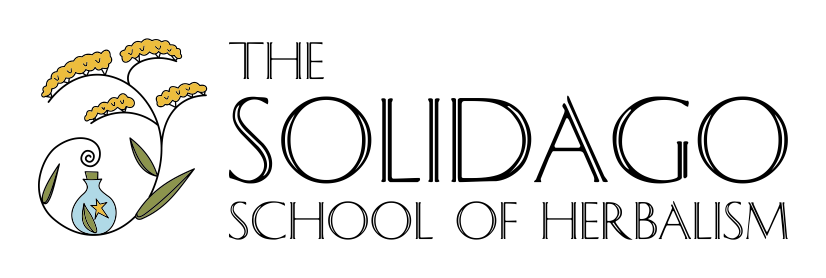Summer is a lot of fun, but often all that fun can lead to bug bites, bee stings, sunburns, brown tail moth rash, poison ivy, and minor wounds.
That is why I am glad I can find Plantain (Plantago spp.) leaves just about everywhere I go!
Plantain (not the banana, but the common weed) can be found wherever humans tread, whether it is by shoe or tire.
The seeds of Plantain have a coating that gets sticky when wet. They stick to the bottoms of shoes and tires of cars and bikes.
Check your driveway and parking area. There will likely be Plantain growing along the edges. You will also find it growing along walkways, sidewalks, paths, lawns and even your front door.
There are two common plantain species that grow where I live, and likely where you live too.
Broad leaf plantain, Plantago major (on the left) and Lance leaf plantain, Plantago lanceolata (on the right).
These two species can be used interchangeably medicinally.
A classic way to work with plantain is as a "spit poultice". When I am out in the garden and get a bee sting, bug bite, or cut, I simply harvest a leaf, chew it up to release its juices, and place it on the irritated spot. It sticks pretty well, long enough to do the job, anyway. It can stop bleeding, fight infection, stop a sting or bite reaction, and even potentially draw out a splinter.
The leaves may be harvested at any time of the growing season. I only harvest 1-3 leaves from each plant, depending on how many leaves the plant has. It is important to make sure that you leave enough leaves on the plant, so that it will be minimally effected by your harvest.
The leaves can be dried for tea to aid the health and structure of the digestive tract.
They can also be infused into oil for relieving bug bites, bee stings, and inflamed or irritated skin.
The infused oil can be made into a salve with beeswax or tallow for easier application, travel, and preservation.
Lance Leaf Plantain, Plantago lanceolata
Plantain Infused Oil
1. Harvest Plantain leaves, leaving plenty for each individual plant's survival. Harvest with honor, gratitude, and appreciation.
2. Make sure to keep the harvested plant out of sunlight from immediately post harvest to the final product. The sun deteriorates the herb and its constituents.
3. Dust them off with your hands, removing any dirt. Do not wash them with water, it will mold your oil.
4. Cut them into small pieces with scissors.
5. Lightly pack a small jar (that is clean and completely dry) with the plant material. Leave a little bit of space between the top of the plant material and the lip of the jar.
6. Fully cover the plant material with plain olive oil. Do not use extra virgin olive oil or it will smell bad. There is too much olive going on in the EVO. You can use any other oil that you like. Almond oil or grape seed oil are lighter in consistency than the olive oil.
7. Use a chopstick or knife to poke the plant material and oil, releasing air bubbles from within the jar.
8. Cover the jar with a tight lid.
9. Put a label on top of the jar. If you put it on the side, it will likely get oil on it which will make it hard or impossible to read.
10. Place the jar in a small bowl or lipped plate. The oil will likely ferment a little, due to the fresh plant material. It will seep out of the lid and down the outside of the jar. It is best to catch this oil in the bowl so that it does not make a huge mess or become a fire hazard.
11. Let the oil and plantain macerate for 4-6 weeks.
12. Strain the oil from the leaves into a clean and dry jar or bottle.
13. Once you have the Plantain oil, you can make a salve with it. Melt beeswax or tallow into the oil in a double boiler until the desired consistency is reached once cooled.
14. You can use the oil on red, inflamed, itchy skin including eczema (especially dry eczema), rashes, bug bites, bee stings, etc.




